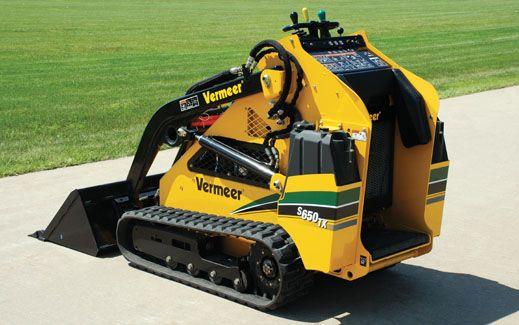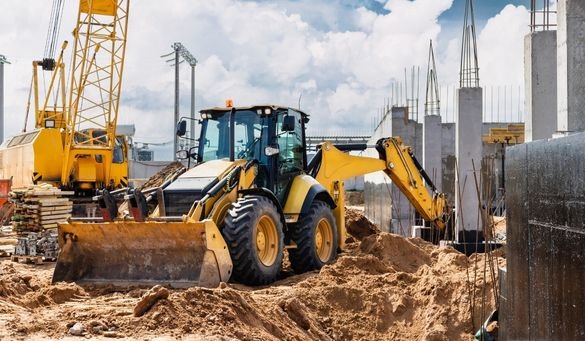Mini Excavator Rental: Compact Machines for Limited Spaces
Mini Excavator Rental: Compact Machines for Limited Spaces
Blog Article
Optimize Your Spending Plan by Comprehending the Expenses Associated With Construction Equipment Leasings
Understanding the complete range of prices related to building and construction devices leasings is vital for optimizing your budget. While the first rental cost might seem simple, numerous additional costs-- such as transportation, fuel surcharges, and upkeep-- can promptly gather, impacting your economic planning. Being conscious of different fees and the intricacies of rental arrangements can help prevent unexpected monetary worries. What methods can be employed to effectively handle these prices and make certain a much more efficient rental experience?
Introduction of Rental Prices
When considering building and construction devices services, recognizing the associated costs is paramount for effective budgeting and project planning. Rental prices can vary considerably based upon several variables, including tools type, period of rental, and area. The first rental charge frequently mirrors the equipment's market need and its connected functional capabilities, affecting the overall expense.
Along with the base rental rate, supplementary prices might develop, such as transport fees, fuel surcharges, and maintenance fees. It is vital to represent these additional costs to properly assess the complete cost of renting out tools. In addition, the rental period can influence rates; longer services may receive discounted rates, while short-term leasings may sustain higher everyday fees.

Break Down of Rental Rates
A comprehensive understanding of rental prices is necessary for specialists and task managers intending to maximize their spending plans. Rental rates for building and construction devices commonly include numerous components, consisting of base prices, time-based fees, and usage fees.
Base prices are the core costs related to the service of the devices, commonly identified by the type and size of the equipment. These rates can differ substantially, influenced by elements such as equipment demand, availability, and regional market trends. Time-based costs, which might be daily, weekly, or monthly, serve to accommodate different project timelines and rental durations.
In addition, rental rates might consist of use fees, which are relevant when tools is utilized beyond a specified limit, ensuring that the rental company can represent wear and tear. Seasonal demand variations can likewise impact rental prices, with peak construction seasons commonly regulating greater costs.
Additionally, recognizing the rental company's policies pertaining to upkeep and insurance can offer more understanding into the overall cost structure. By evaluating these elements, professionals can make informed choices, ensuring the selection of rental devices straightens with both project requirements and budget plan constraints.
Additional Fees to Consider
Recognizing the ins and outs of extra charges is vital for professionals to handle their overall leasing expenses successfully. Past the basic rental prices, numerous additional fees can considerably affect the overall price of equipment leasing. These fees usually consist of shipment and pickup costs, which can vary based on distance and logistics entailed in moving the equipment to and from the task site.
Moreover, some rental firms might impose fuel surcharges if the equipment is returned with much less fuel than when leased. It is also necessary to know possible cleaning costs, specifically for customized tools that needs detailed maintenance after use.

Thoroughly assessing the rental agreement and clearing up these additional costs upfront can assist service providers make sure and stay clear of unforeseen expenses that budgets stay undamaged throughout the task lifecycle.
Repair And Maintenance Costs
Routine repair and maintenance costs are commonly forgotten factors that can dramatically affect the general expense of building and construction equipment leasings. When leasing equipment, it is essential to take into consideration not only the rental charges yet additionally the potential prices related to maintaining the equipment in optimal operating condition.
Many rental business include fundamental maintenance as part of the rental contract; however, much more unanticipated breakdowns or considerable repairs can lead to additional expenses. It's necessary to review the rental agreement very carefully to understand what maintenance services are covered and what duties fall on the renter.
Additionally, devices that is not well-kept can result in ineffectiveness at work website, possibly triggering delays and boosting project costs. To alleviate these threats, it is recommended to conduct routine examinations and preserve open communication with the rental service provider regarding any problems that emerge during usage.
Insurance Coverage and Responsibility Expenses
Insurance policy and obligation costs are critical components that can considerably affect the total cost of construction devices leasings (scissor lift rental). These prices make sure that both the rental company and the client are protected from potential financial losses occurring from mishaps, damage, or burglary during the rental duration

Furthermore, clients should recognize any type of deductibles or exemptions in the insurance plan, as these can impact prospective out-of-pocket expenditures. Recognizing the terms of any type of insurance policy coverage is essential to avoid unexpected expenses. Eventually, budgeting for insurance and liability expenditures can aid make sure a smoother rental experience and safeguard against financial risks associated with construction jobs.
Conclusion
Finally, a thorough understanding of the expenses related to construction tools leasings is vital for effective spending plan management. By examining rental rates, additional charges, maintenance expenditures, and insurance coverage companies, needs read this and individuals can lessen unexpected expenses. This critical technique not only improves cost-effectiveness however additionally makes certain that jobs advance smoothly and successfully. Eventually, notified decision-making relating to tools services adds to the general success of construction ventures.
Rental costs can differ substantially based on numerous variables, including devices kind, duration of leasing, and place (heavy equipment rental). The rental duration can influence rates; longer services may qualify for reduced prices, while short-term leasings may sustain higher everyday charges
By conducting extensive research and engaging with respectable rental companies, specialists can effectively browse the intricacies of rental prices, ultimately optimizing their monetary resources.
Past the standard rental prices, different supplementary costs can significantly affect the total cost of tools leasing. Rental firms typically give responsibility insurance that covers injuries to 3rd parties or damage to residential property, while devices damage insurance policy can cover the expense of repair services or substitute if the leased equipment is damaged.
Report this page